For the past three decades that I’ve sailed, rowed, and paddled Seattle’s Salish Sea, Bainbridge Island has always been the far shore, an inconspicuous streak drained of color by distance and an easily overlooked divider between the gunmetal-gray waters of Puget Sound and the serrated skyline of the Olympic Mountains. I’d made the 4-1/2-mile crossing to the island a half dozen times, always to the same cove on the northern end, and the only glimpses I’d ever had of its west side were from a highway bridge crossing from the mainland.I’d lost most of the summer, first to the pandemic and then to the miasma of wildfire smoke that blanketed Seattle, and didn’t want to let August slip away without at least a short cruise. I launched ALISON, the Caledonia Yawl I built in 2005, from the ramp at Shilshole Bay Marina. The tide was out and if there was a breeze blowing, it wasn’t dipping down over the breakwater and seawall. The dock was so low that any wind there might have been was skipping past. I didn’t bother setting the masts, but lowered the outboard into its well, assuming I’d make the crossing to Bainbridge under power.With the outboard at an idle, I steered around the tide-blackened boulders at the end of the breakwater, throttled up, and steered for Port Madison on the north end of the island, which was 5 miles distant and only barely distinct from the paler blue-green wooded mainland beyond it. As I brought the outboard up to 2/3 throttle, the rattling in ALISON’s hull smoothed. A few hundred yards out from the breakwater, the water was only rippled, without a discernible pattern, so I stopped the motor and coasted to a stop. The breeze I had felt on my face was only the air I was moving through. A few hundred yards farther into the Sound, the water was darker, and the apparent wind had shifted slightly to port. I stopped again and the breeze remained as ALISON slowed.
Join The Conversation
We welcome your comments about this article. To include a photo with your remarks, click Choose File below the Comment box.


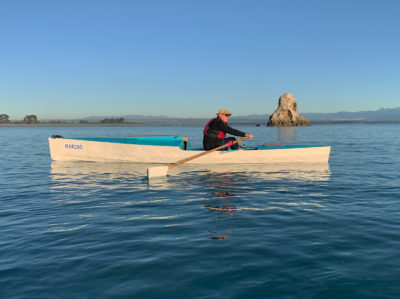

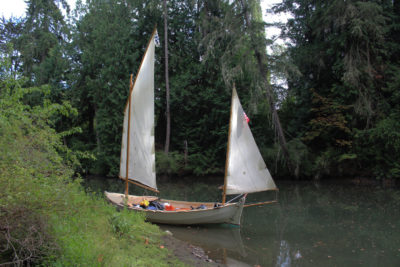
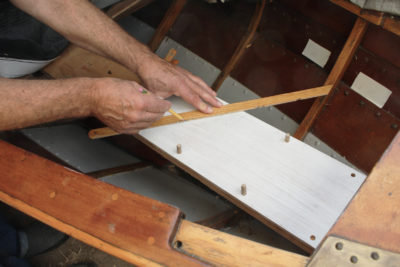
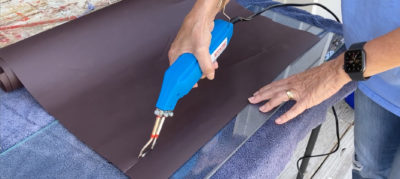
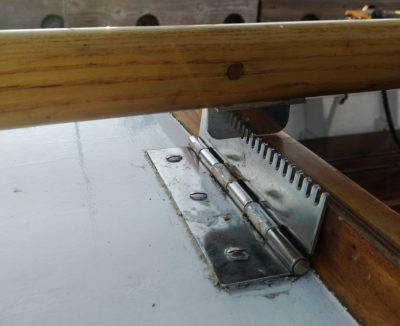

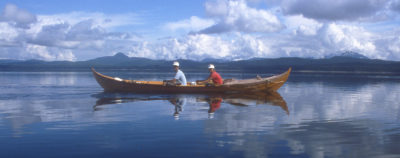
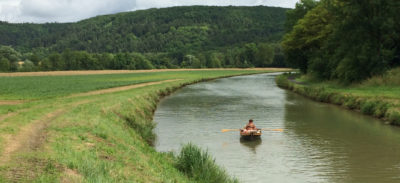
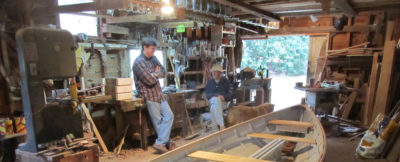
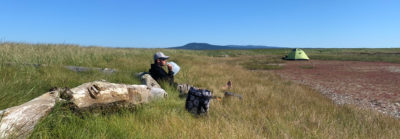
What a pleasant way to start the day, reading about a circumnavigation of “my” island! Agate Pass can be brutal; Rich Passage is usually better protected from the wind so there is less chop but the current runs fast, I’ve spent a lot of time with a lovely wake spinning out from under the hull with the shoreline staying firmly in place. There is a small watercraft campsite in Fort Ward, mostly used by paddlers; it is a bit exposed for anchoring out.
I keep my Oughtred-designed Eun Mara in Eagle Harbor. That trimaran has been there for years. You did well to not anchor in the preserve, the waterfront folks are quite “protective” of it.
Thank you for the tour, I’ve thought about sailing around the island but it is too easy to put off an adventure when it is in your own backyard. Next summer…
Great adventure. I live on Eagle Harbor. Before retirement I was always trying to con guys at work into my misadventures. One victim joined me in a one-day sail around Bainbridge in my old cold-molded International 14. Hit by all kinds of weather that day. Finally becalmed in the fast current & ferries of Rich Passage. Had one paddle between us & made it to shore. Then things went wild with the winds. We took off like we were on water skis. Big air the rest of the trip. Very fun… for me at least. BUNNY WHALER, an early ’80s Boston Whaler ‘Harpoon,’ has been in the R2AK (700 mile race to Alaska) twice! Great Island family.
Christopher,
I really enjoyed reading your circumnavigation account. It was very well written.
I too have a Caledonia Yawl. You made some very interesting enhancements, like the Mizzen staysail that I would like to know more about. Do you have a way to adjust this sail once it is raised?
Your bed looks much more comfortable than my current arrangement. Did you also modify the centerboard layout?
Thanks for the comment, Ricky.
The mizzen staysail just needs the sheet adjusted. There are two sheets, each with a jam cleat on the mizzen partner. Coming about require dropping the staysail to let the main swing across, either lowering the staysail’s peak or releasing its tack. There is a bit more information in “Mizzen Staysails Add Power,” in the August 2017 issue.
I built my Caledonia yawl with side benches that had ledges that would support the floorboards to make a broad sleeping platform. The centerboard trunk is offset to starboard and built into the bench system. In the lower left corner of each photo, you can see the red cord that pulls the board down and up. The trunk is the white panel beneath the bench in that corner.
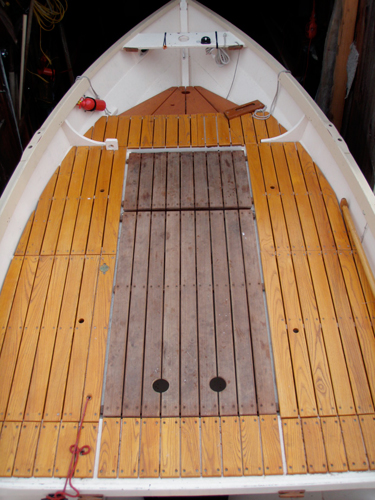
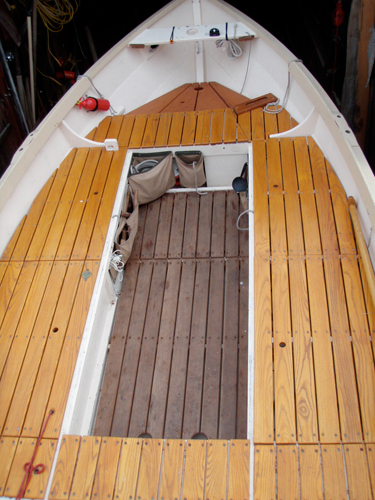
Very fun read. Thank you. Had I known you were traveling by, I’d have hollered hello from Point White Dock that’s practically right in my front yard. Hmmmm…. or maybe not. The rain was pretty serious about then.
You hit all of my favorite places around Bainbridge Island. Manzanita Bay can be noisy in the summer months since it’s frequented by water skiers. Did you use your cagoule?
I did indeed use my cagoule. It’s now part of my regular boating kit. The wind and rain picked on as I made my way south along Port Orchard and I put my cagoule on to stay warm and dry. During the downpour, it provided me with head-to-toe protection and comfort. Before the cruise, I had made a PVC version of a kind of visor used by Aleut kayak hunters and I wore that under the cagoule hood to keep the rain off my face and out of my eyes. It was a great combination.
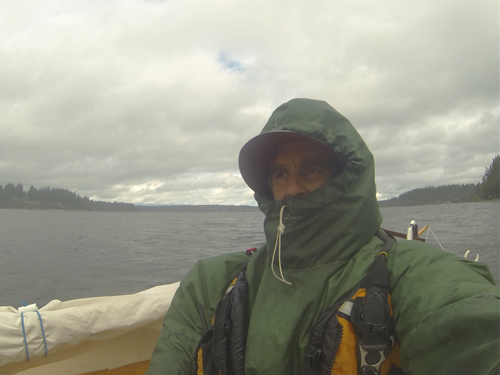
This was an excellent article. For 30 years, my wife and I did week-long canoe trips that often sounded like the weather in this piece. We have moved up to a 30′ trawler, but I’m building a Dave Gentry Whitehall to feed the small-boat addiction.
Wow, beautifully written. I confess to jumping in without reading the author’s name. Once I finished this little holiday of a read I scrolled back to the top and saw Christopher Cunningham. No wonder, I smiled.
Thank you
Intrigued by offset centerboard trunk you installed in the Caledonia. How did you modify the hull to do that? Thanks in advance.
I didn’t have to make any modifications to the hull. For the trunk to be flush with the benches, the board had to be a bit narrower, so made it a bit longer to keep about the same area. My Caledonia is the original 4-strake version, so I could move the trunk about 12” to starboard and still have it within the bounds of the very wide garboard. I didn’t need to fuss with fitting it over a planking lap and I just scribed the bottom of the assembled trunk to fit the curve of the garboard. Then I trimmed the trunk’s top level with the bench supports.
A delightful read! Fun seeing Bainbridge from the water, and it brought back so many memories of sailing and water. And such a clever boat. Thanks.
This is way late (but hey, you just posted this article again) — is your dodger construction documented anywhere? Or could it be? Seems very convenient for small open boats like this!
I made that long before Small Boats started and I didn’t think to document it for an article. I used a few books on boat canvas work as guides.I don’t now recall which books they were.